Harper College offices and services will be closed on Wednesday, January 7, until 10:15 a.m. for an all-campus meeting. Offices will reopen shortly after 10:15 a.m. to serve students.
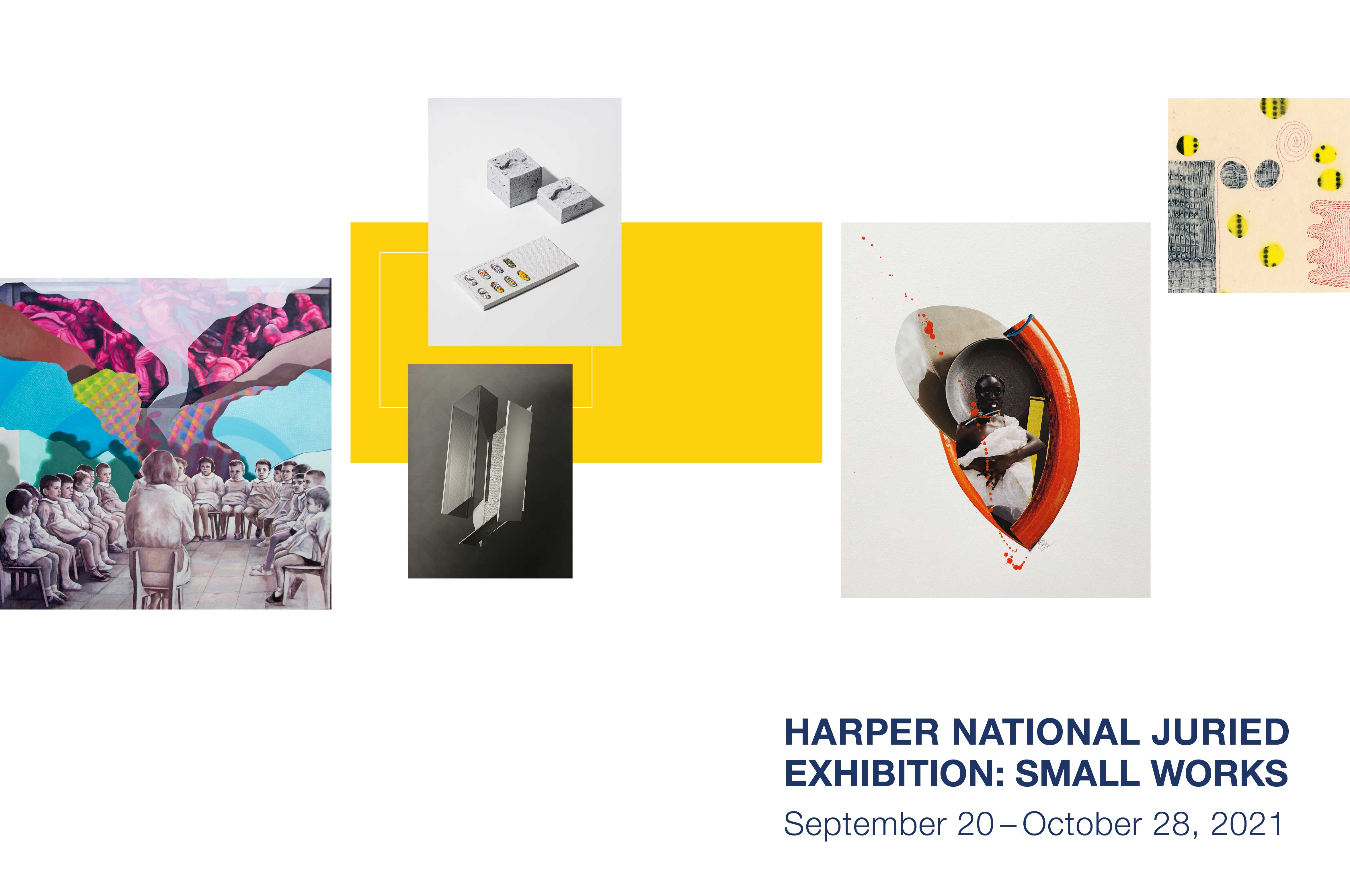
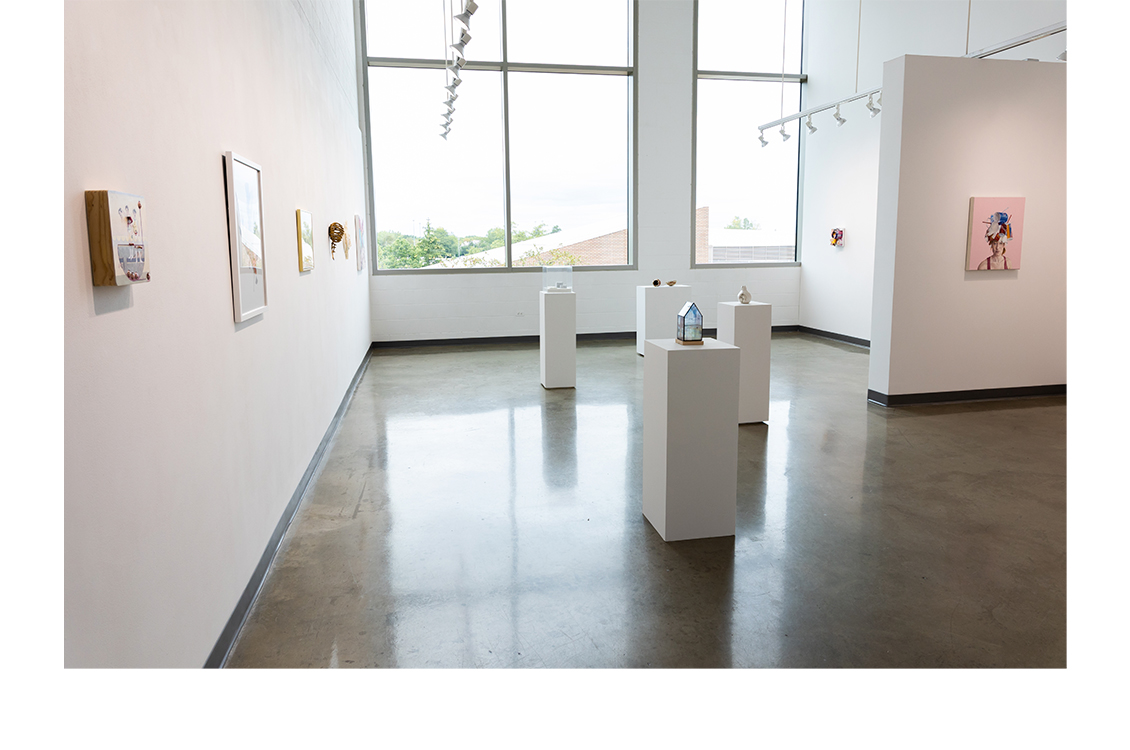
Installation View
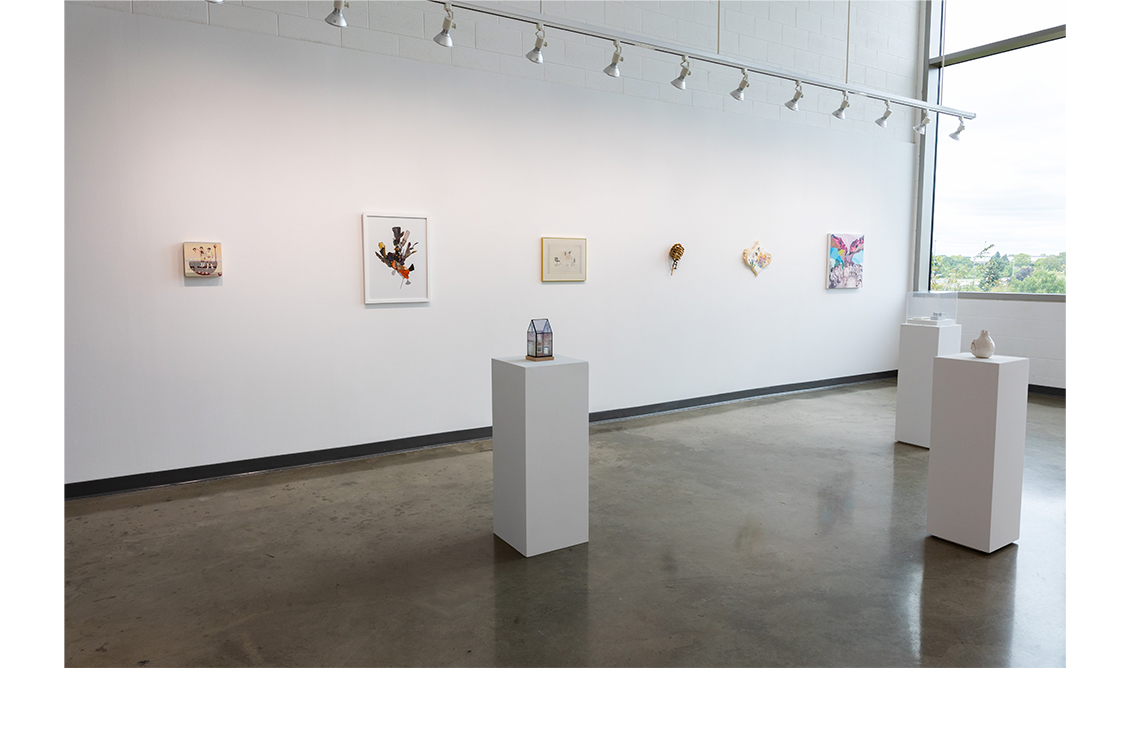
Installation View
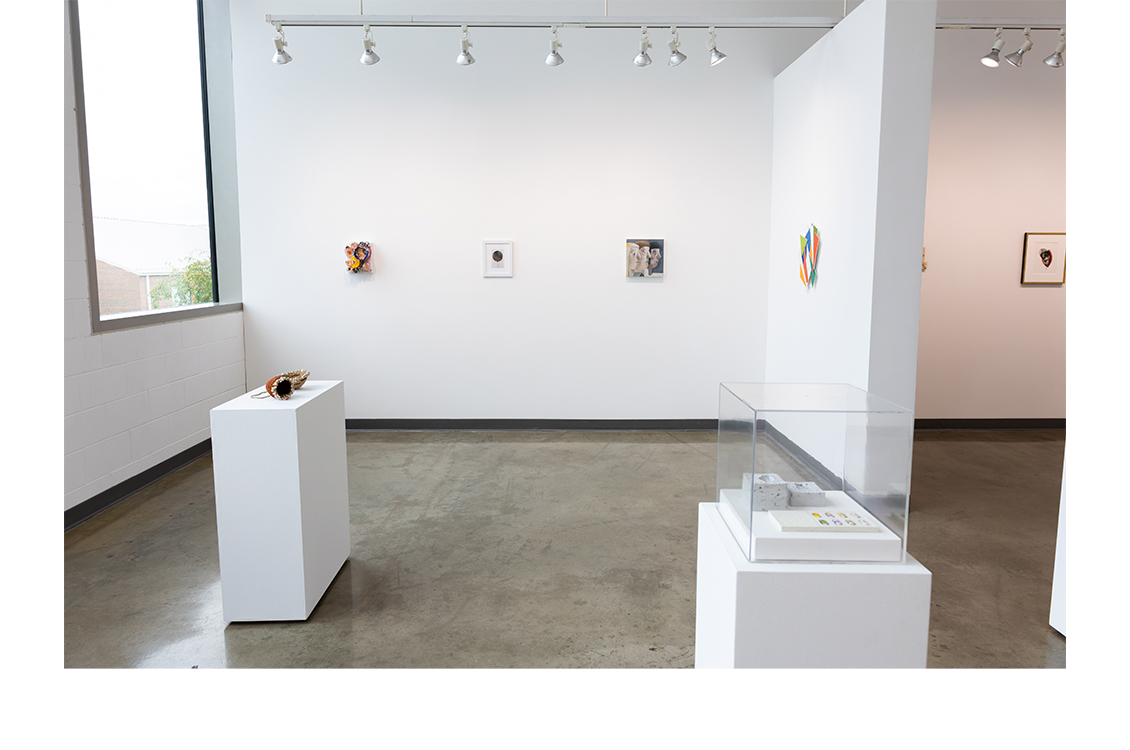
Installation View
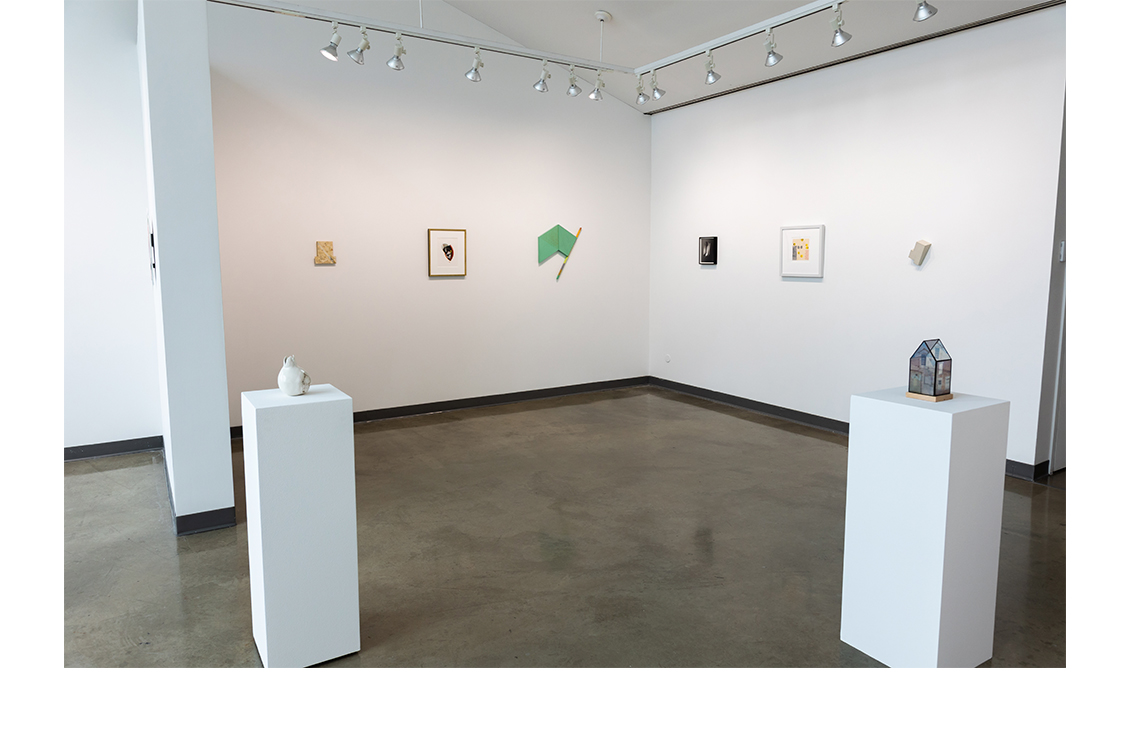
Installation View
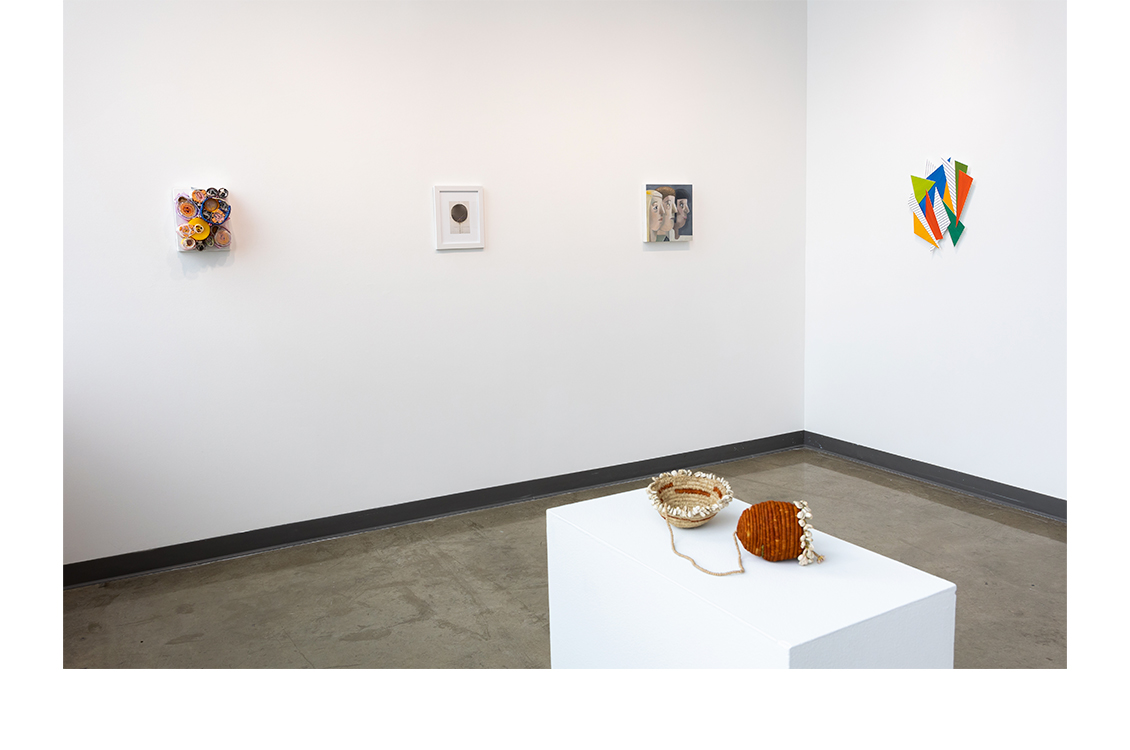
Installation View
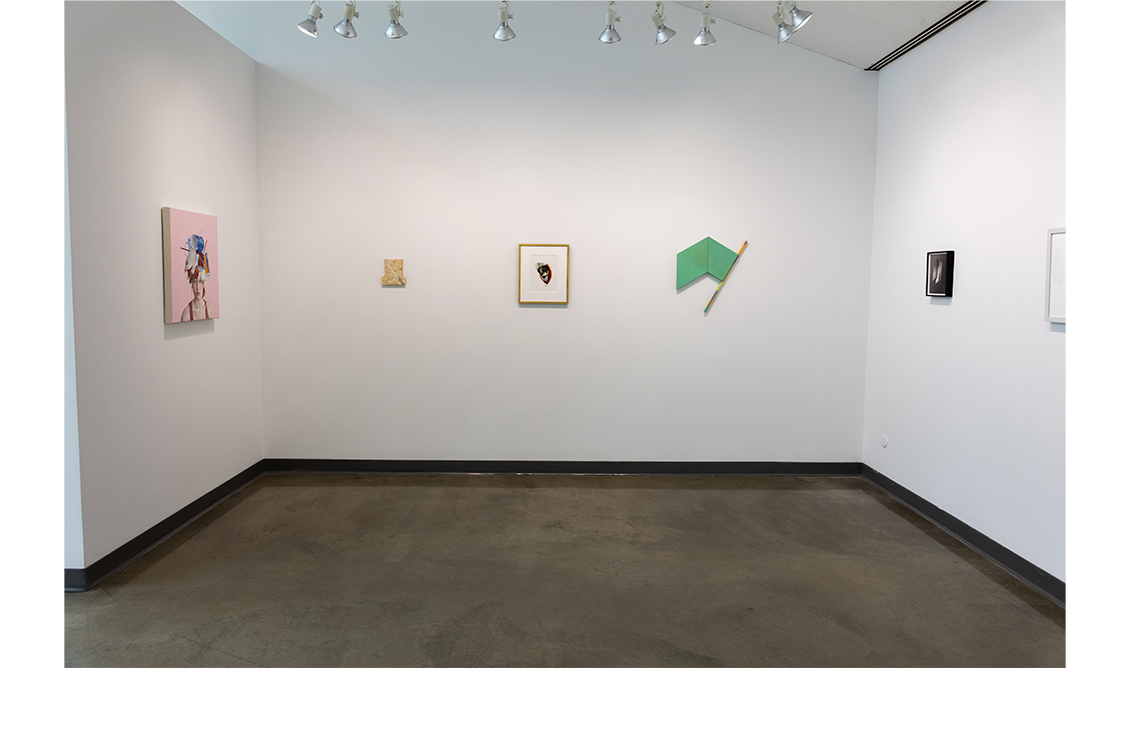
Installation View
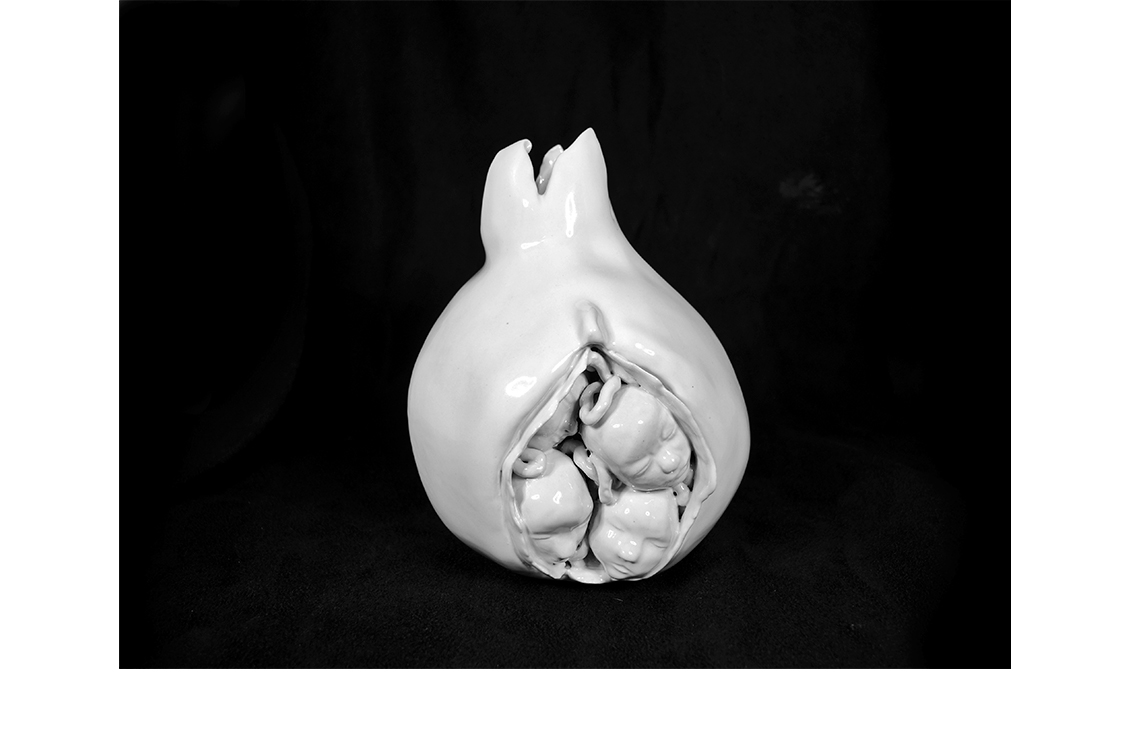
Aodan, Chicago, IL
Abandon All Hope, Ye Who Exit Here, 2020, glazed porcelain, 6" x 4.5" x 4.5"
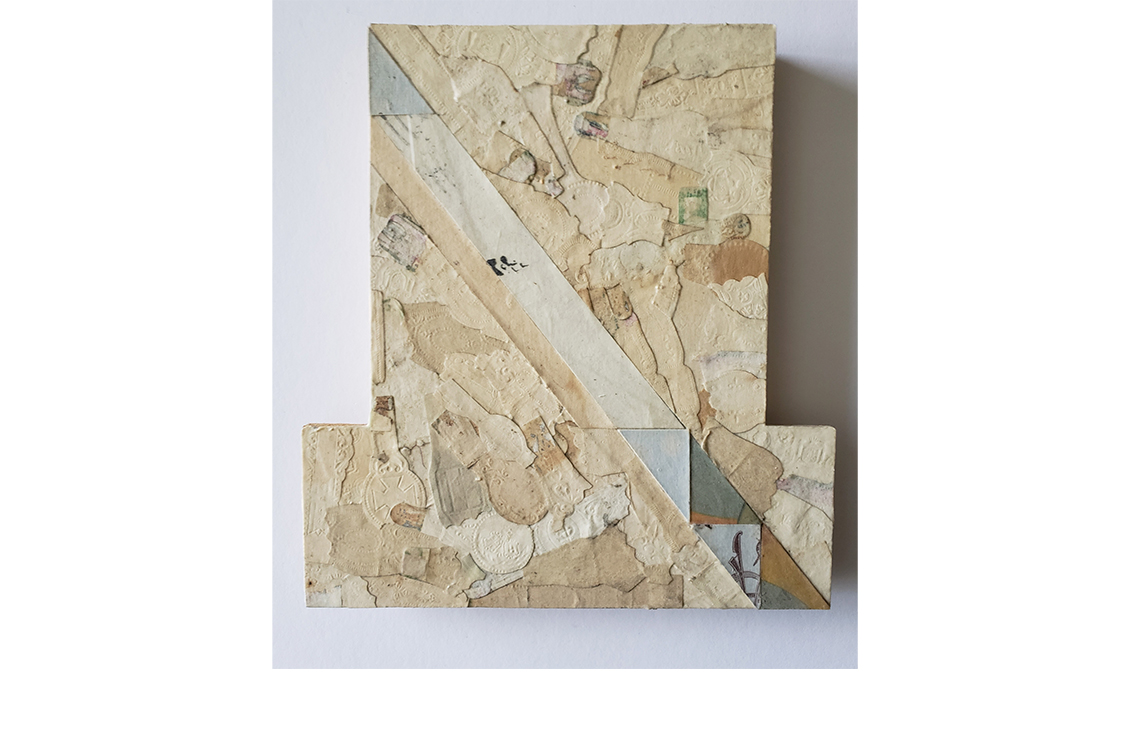
David Bower, Naperville, IL
Composition 2, 2020, mixed media, 7" x 6" x 1"
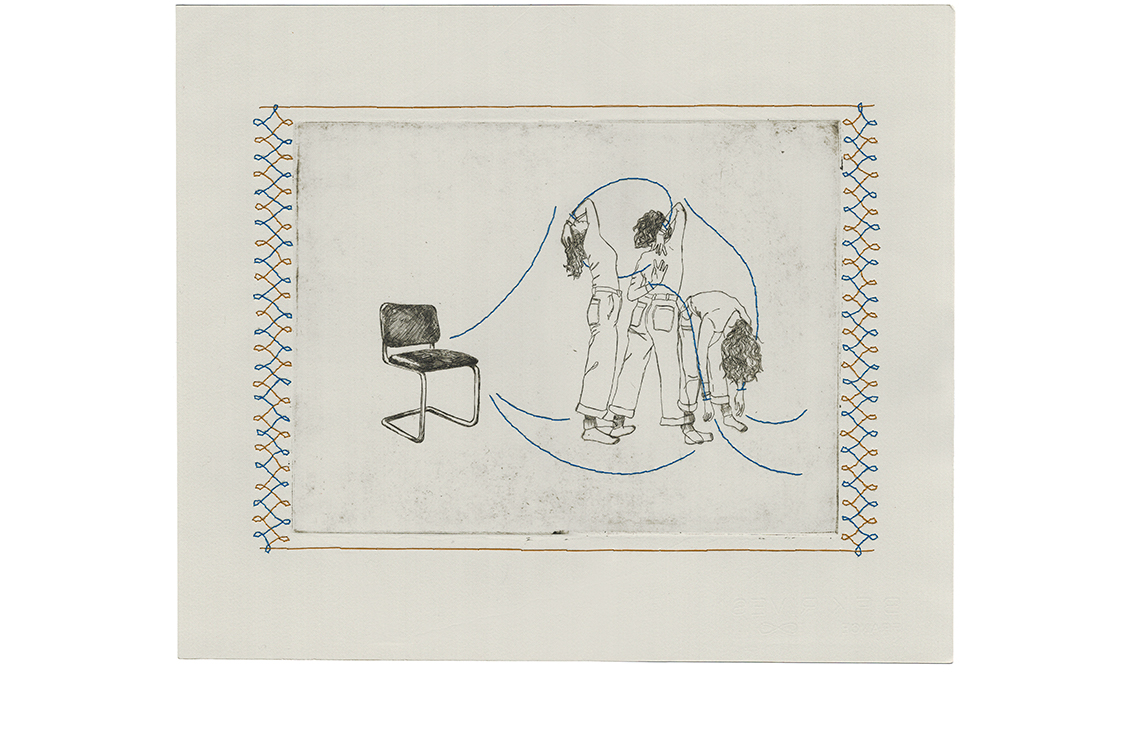
Riley Brady, Chicago, IL
Terrace 4 (Diligence), 2021, etching, hand embroidery, 14" x 17"
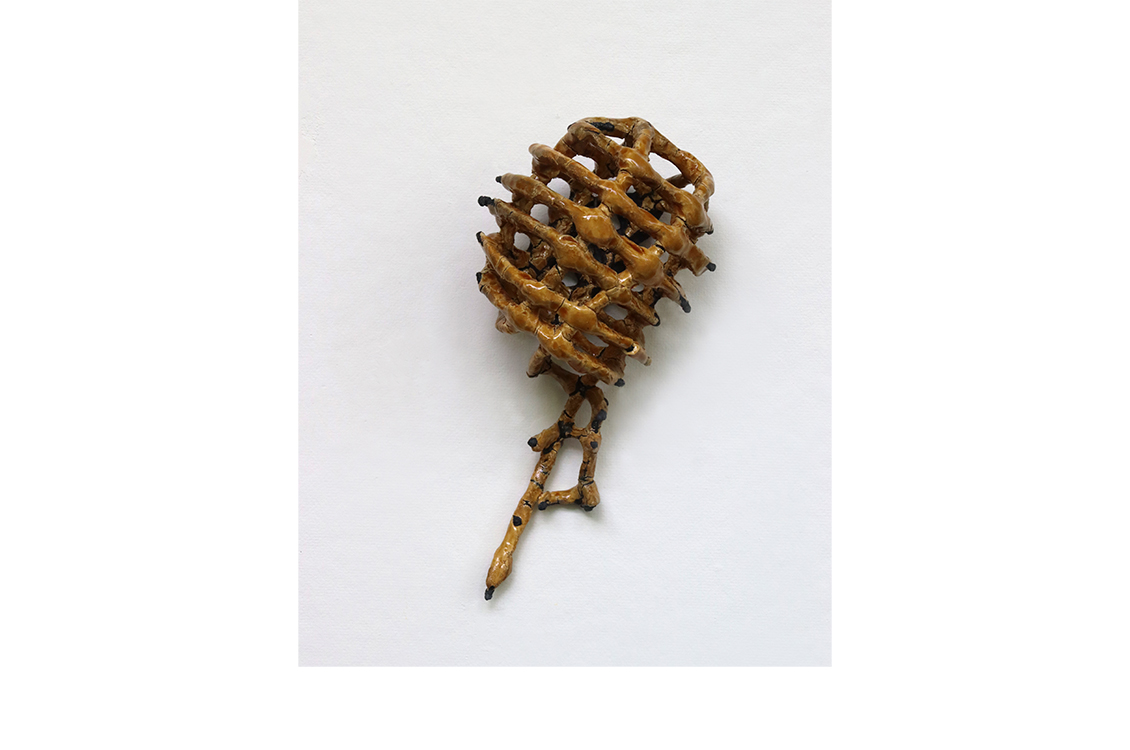
Sally Brogden, Knoxville, TN
Untitled, 2021, clay, 13" x 5" x 5"
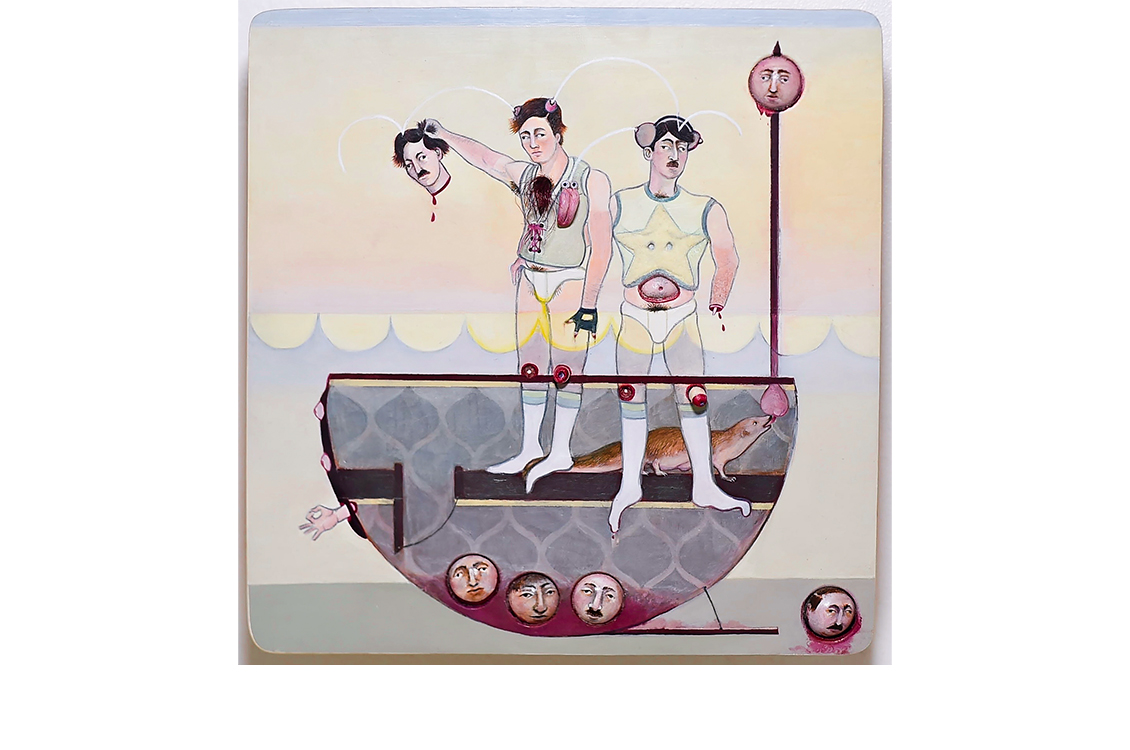
RJ Calabrese, Lebanon, NJ
Not With a Bang But a Whimper (We're Floating, We're Sinking, We Made You Look), 2020,
water soluble oil, polymer clay, thread, flocking, synthetic hair, wood, 8.5" x 8"
x 2"
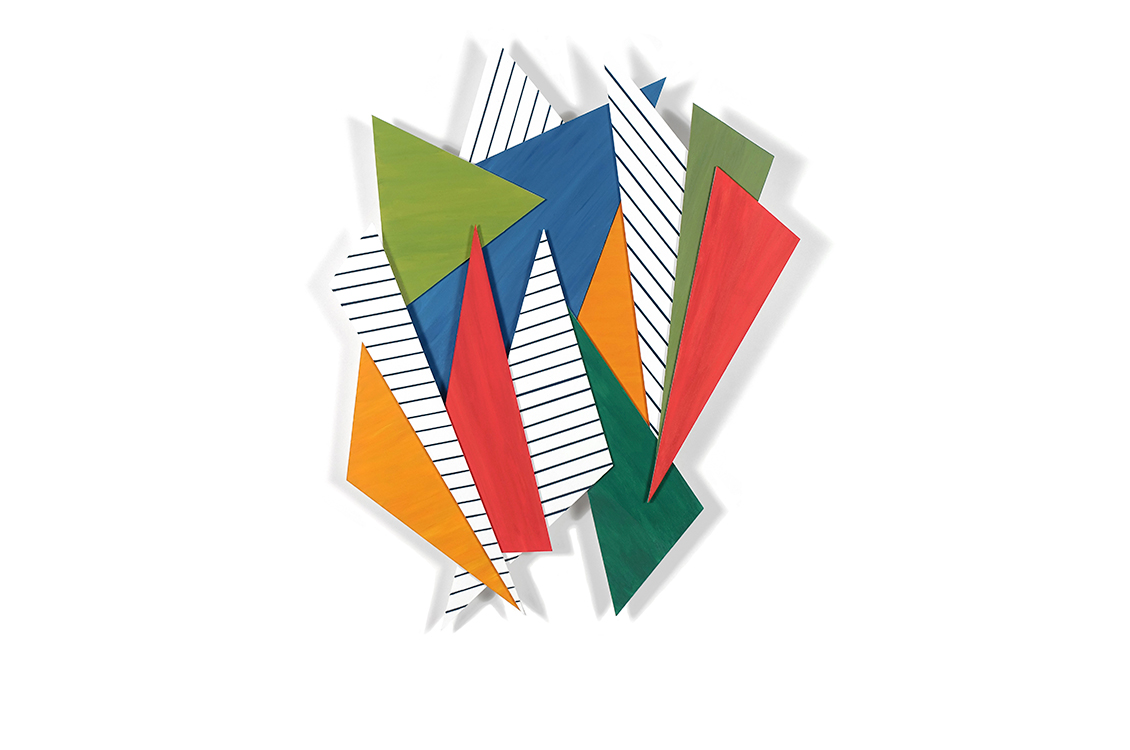
Shelley Gilchrist, Evanston, IL
Artist Statement 7, 2020, acrylic on PVC construction, 19” x 15.5" x 1"
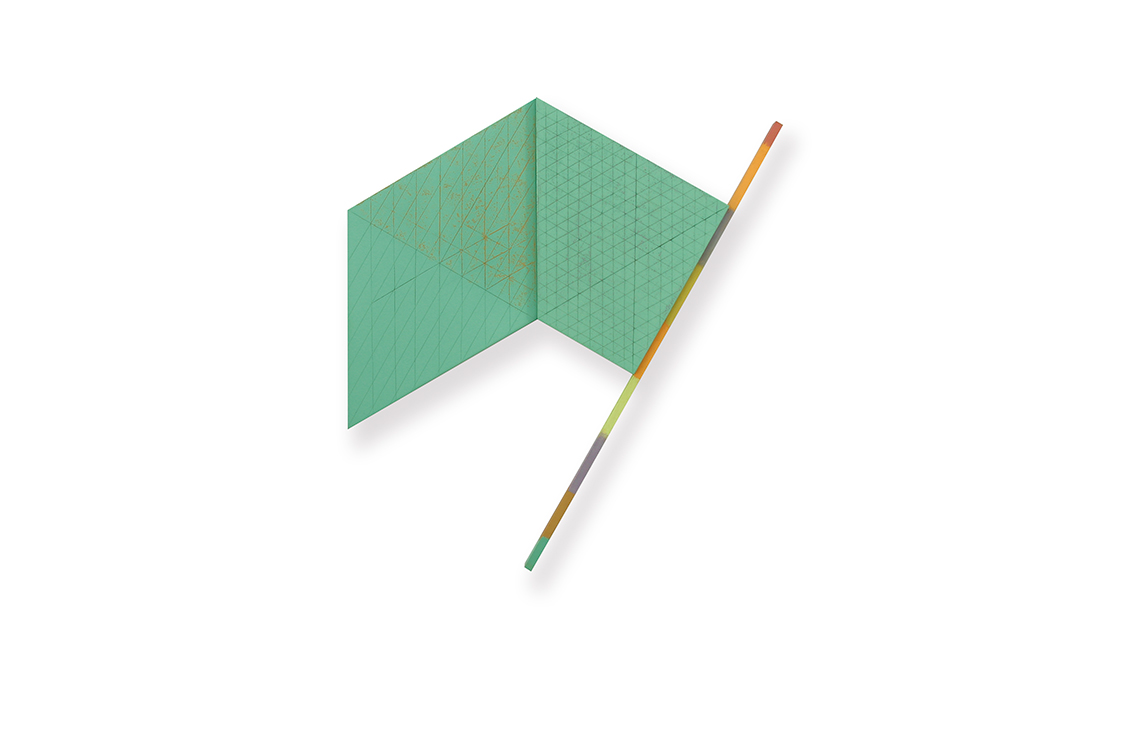
Blinn Jacobs, Brandford, CT
Ad infinitum #3 Ever, 2020, casein, oil pastel on incised Gatorboard of different
thicknesses, balsa wood, 20.75” x 19.5" x 1.25"
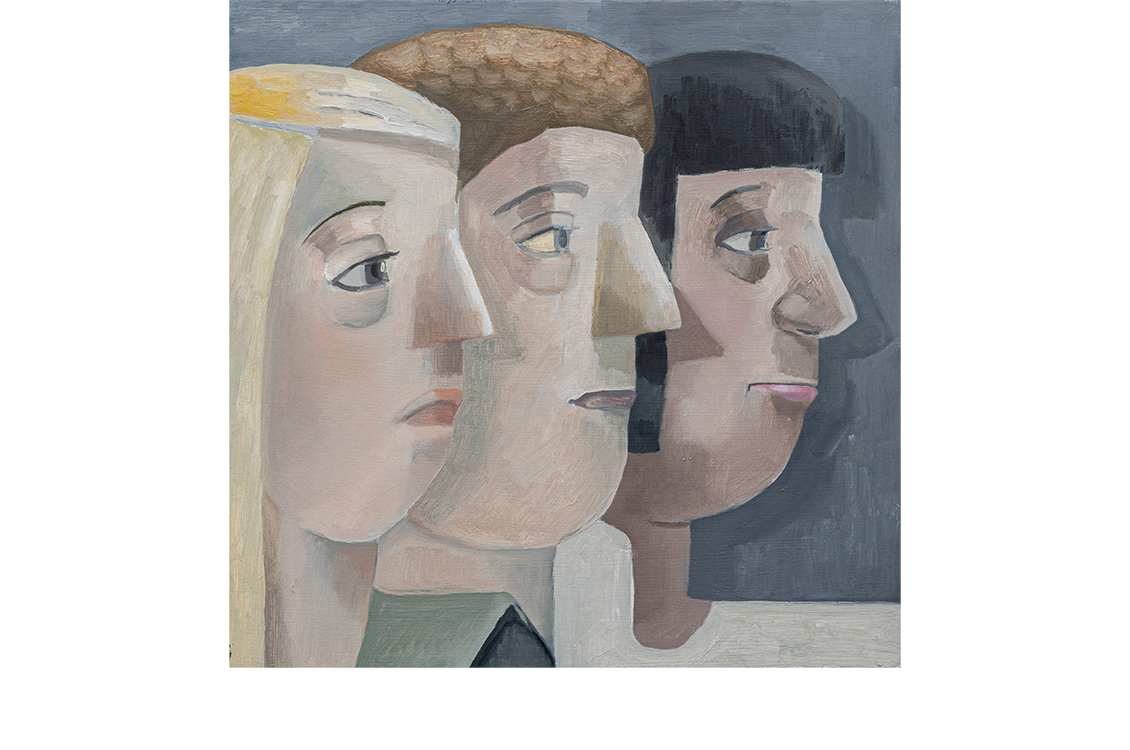
Colleen Kelsey, Oakwood, OH
Imagining My Children Grown, 2021, oil on panel, 12" x 12"
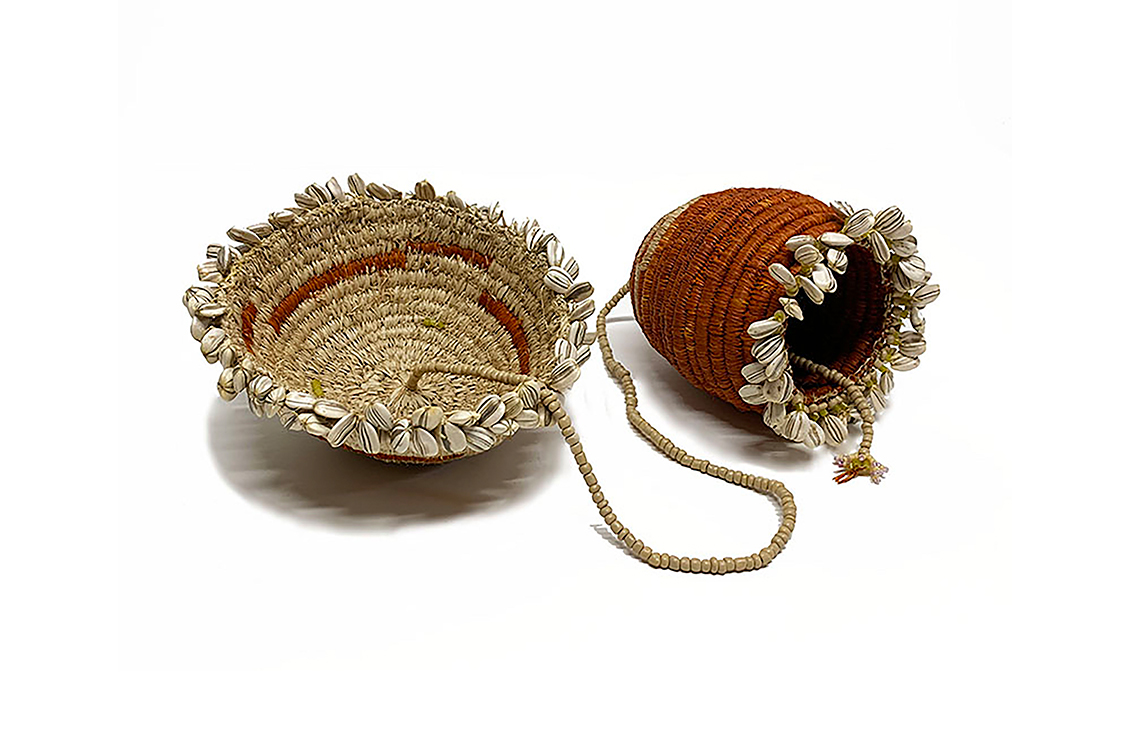
Dawnice Kerchaert, Pontiac, MI
Duo, 2021, coiled pine needles wrapped with raffia, beads, sinew, thread, 3.5" x 11"
x 8" variable
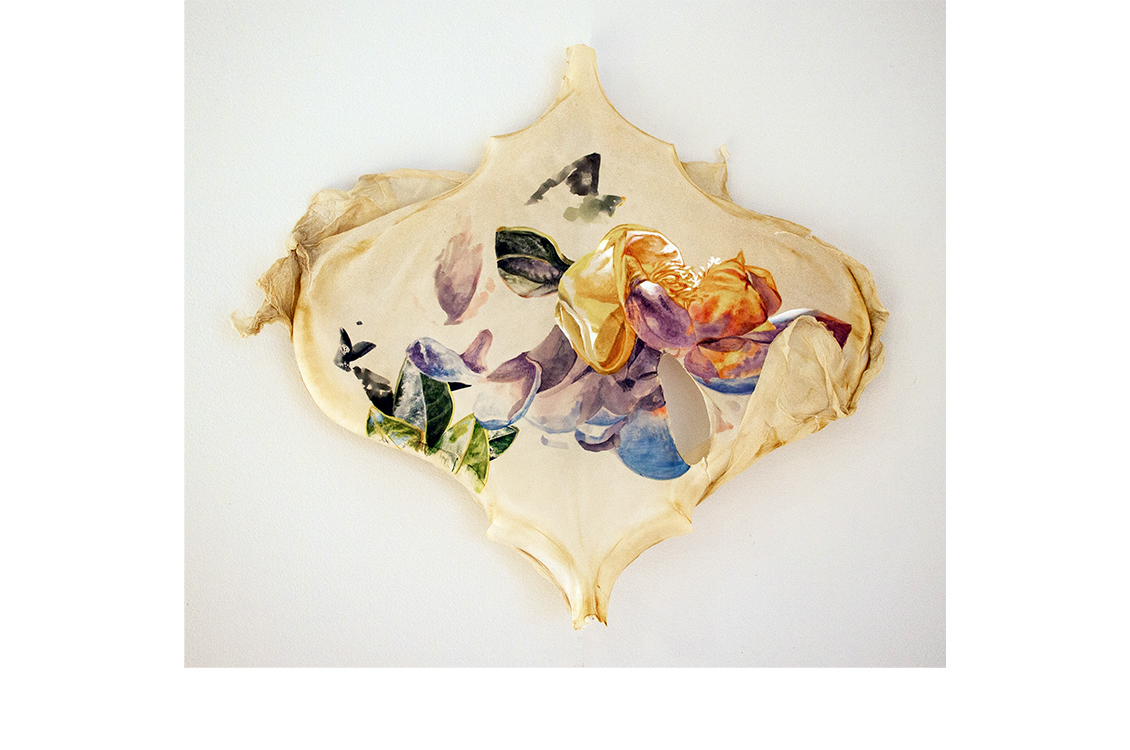
Ambrin Ling, Chicago, IL
A State of Being Unrooted (Lotus), 2020, gouache, watercolor, graphite on handmade
abaca paper, 15" x 15.5" x .75"
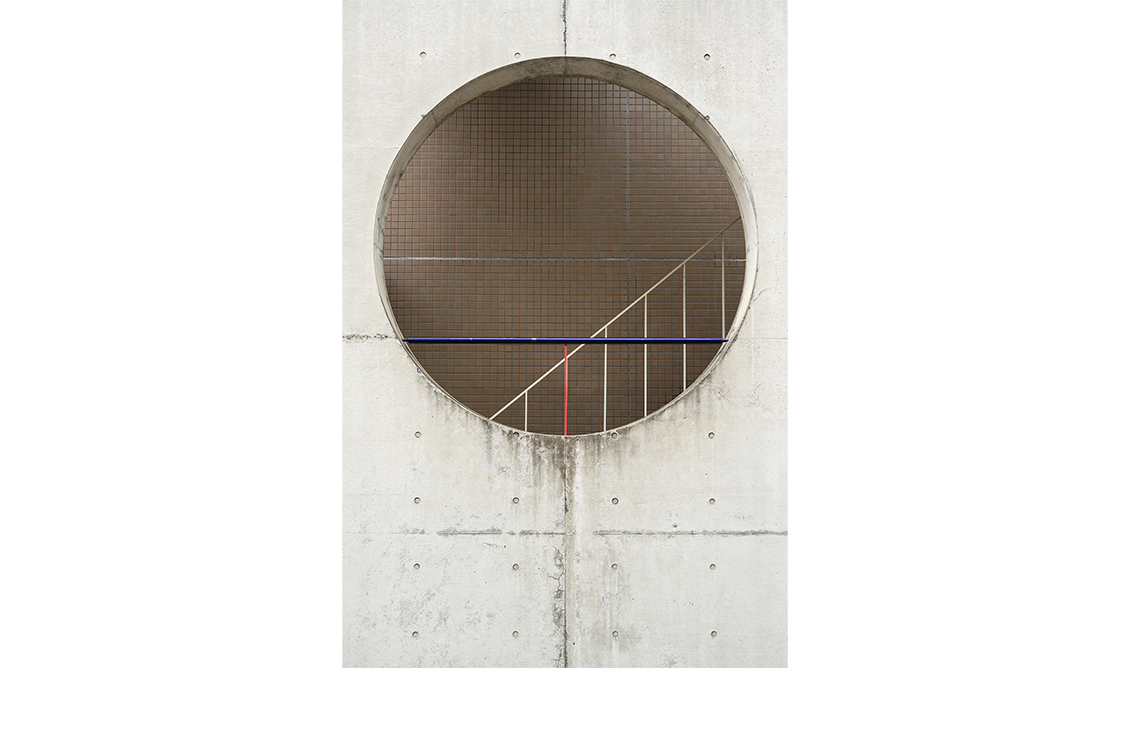
Daniel McInnis, Perrysburg, OH
Home Entrance, Kagurazaka District, Tokyo, 2019, photograph, 6" x 4"
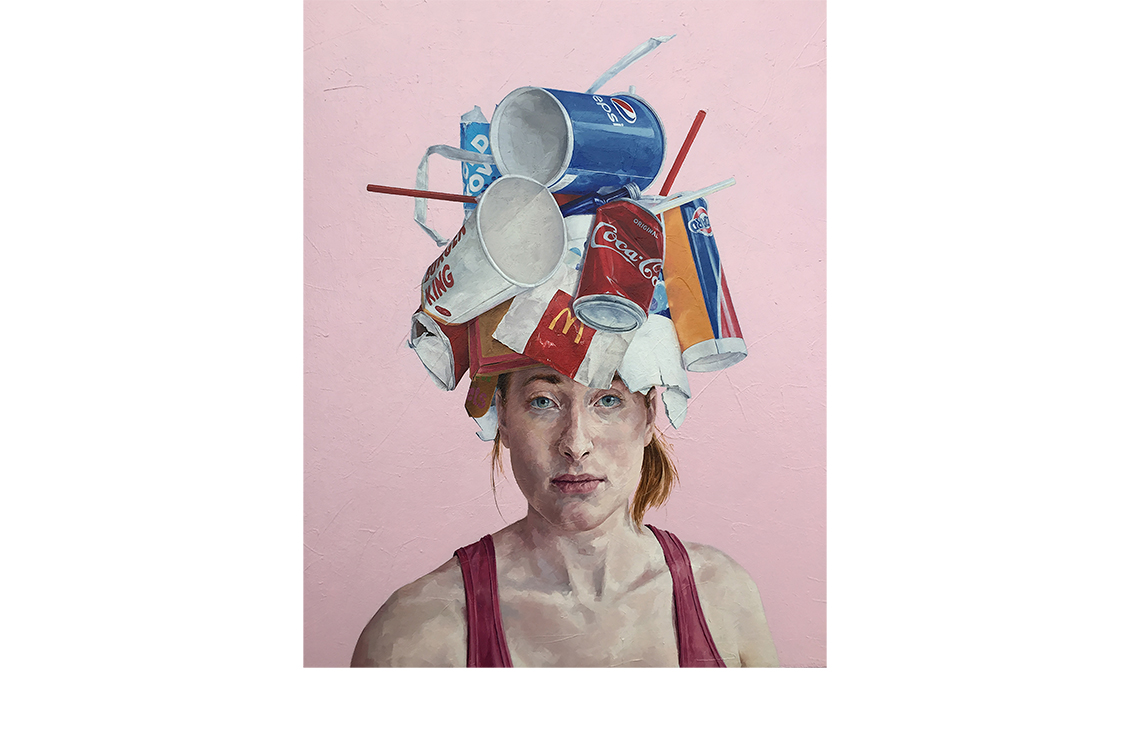
Joshua Newth, Cape Girardeau, MO
Crown, 2019, oil on canvas, 24" x 20"
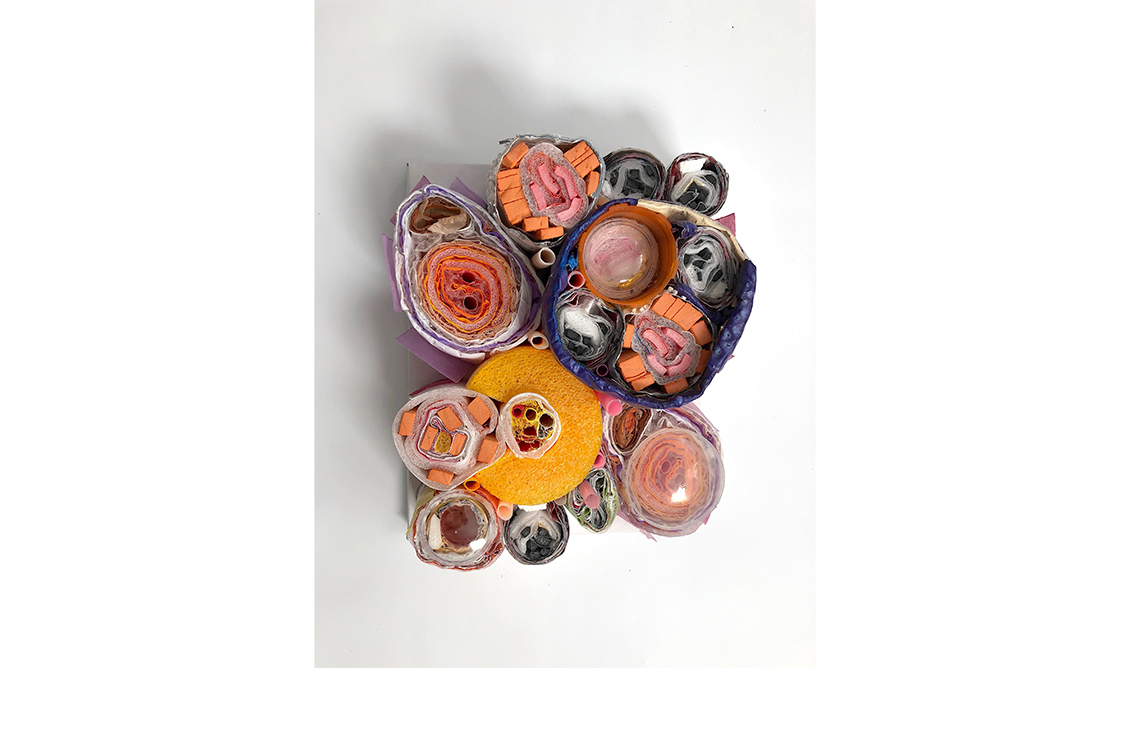
Bryan Northup, Oak Park, IL
Ongoing Unknowing, 2020, plastic and foam assemblage on stretched canvas, 10" x 8"
x 5"
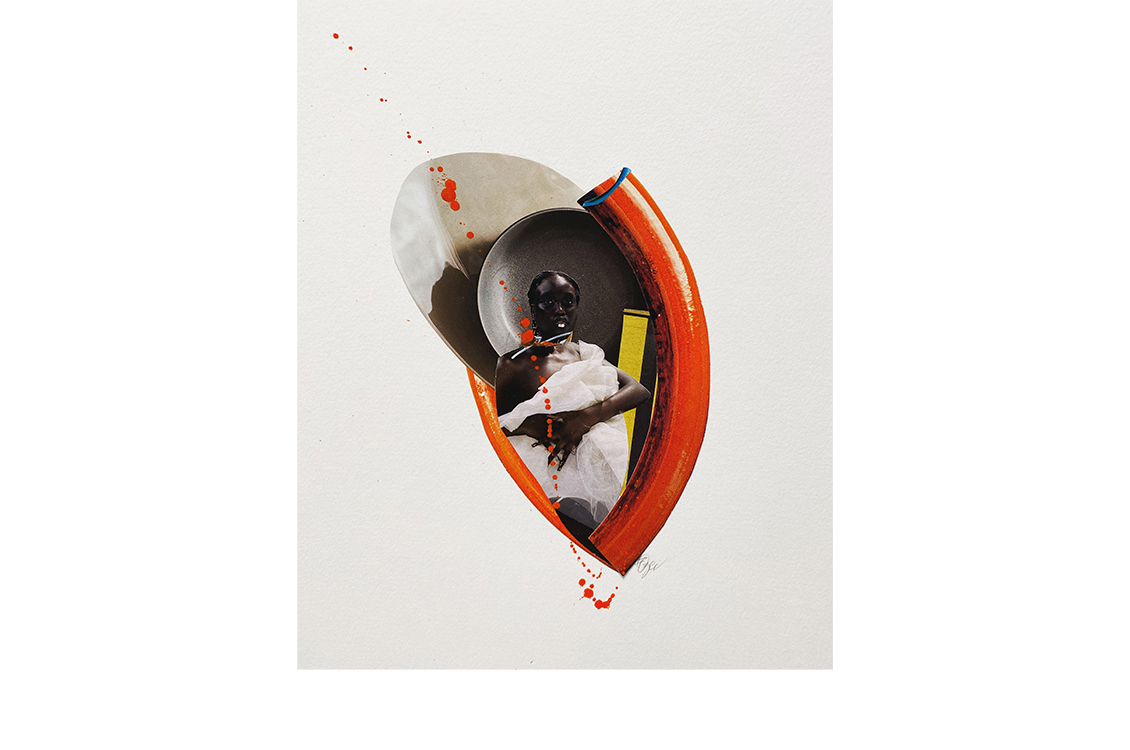
Eve Ozer, Burr Ridge, IL
Birth of Venus, 2020, mixed media collage, 12" x 9"
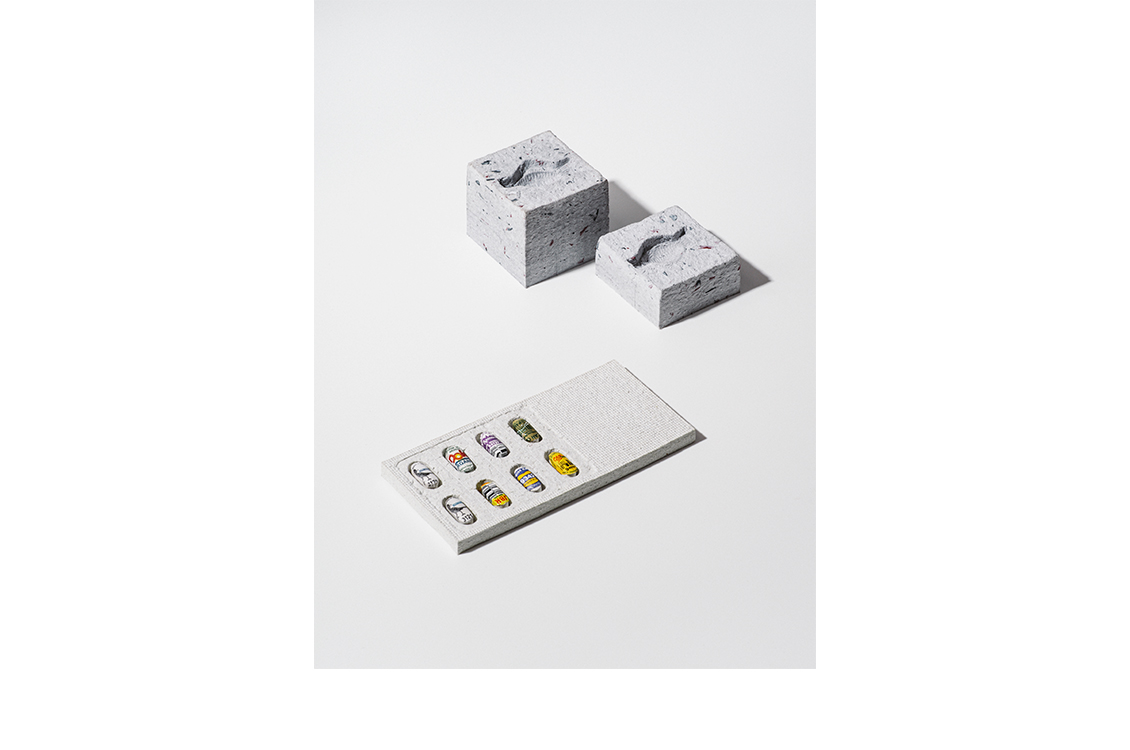
Michelle JY Park, Walnut Creek, CA
Soy sauce fish, 2021, junk mail pulp, 2.25" x 4" x 5.5" and A __________ a day, 2021,
vitamins, fruit labels, magazine pulp, .25" x 3" x 6.5"
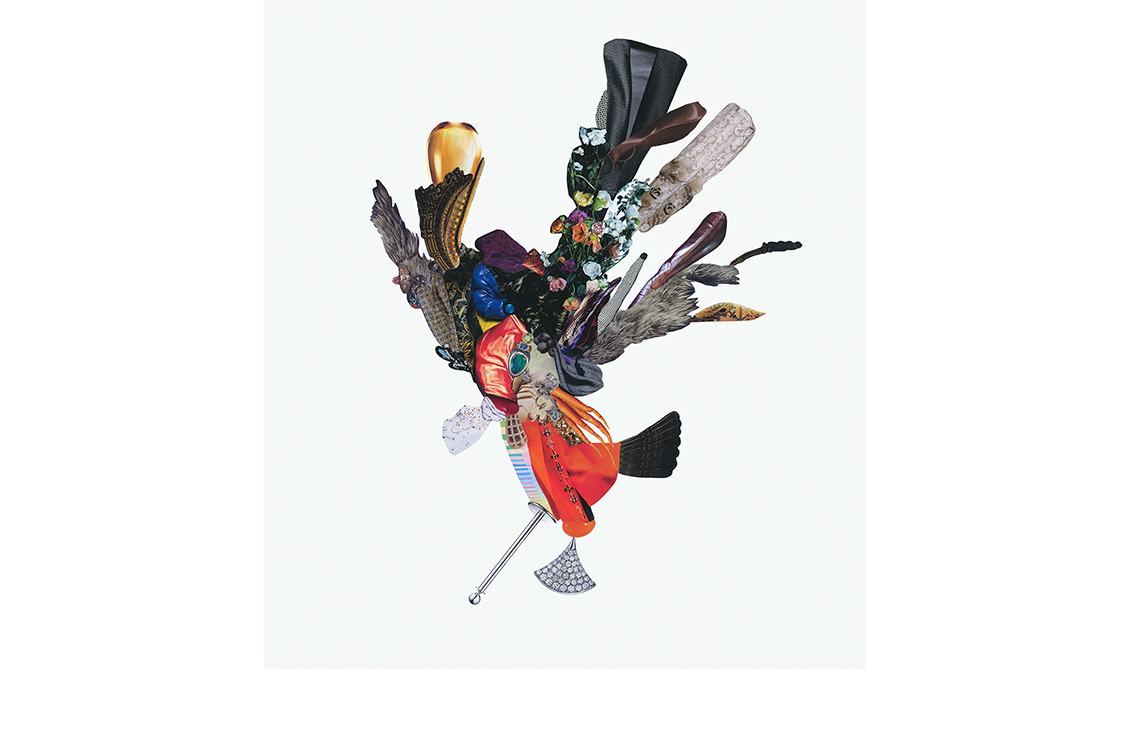
Angela Piehl, Milwaukee, WI
Mosquito, 2017, archival pigment print from collage, 24"; x 18"
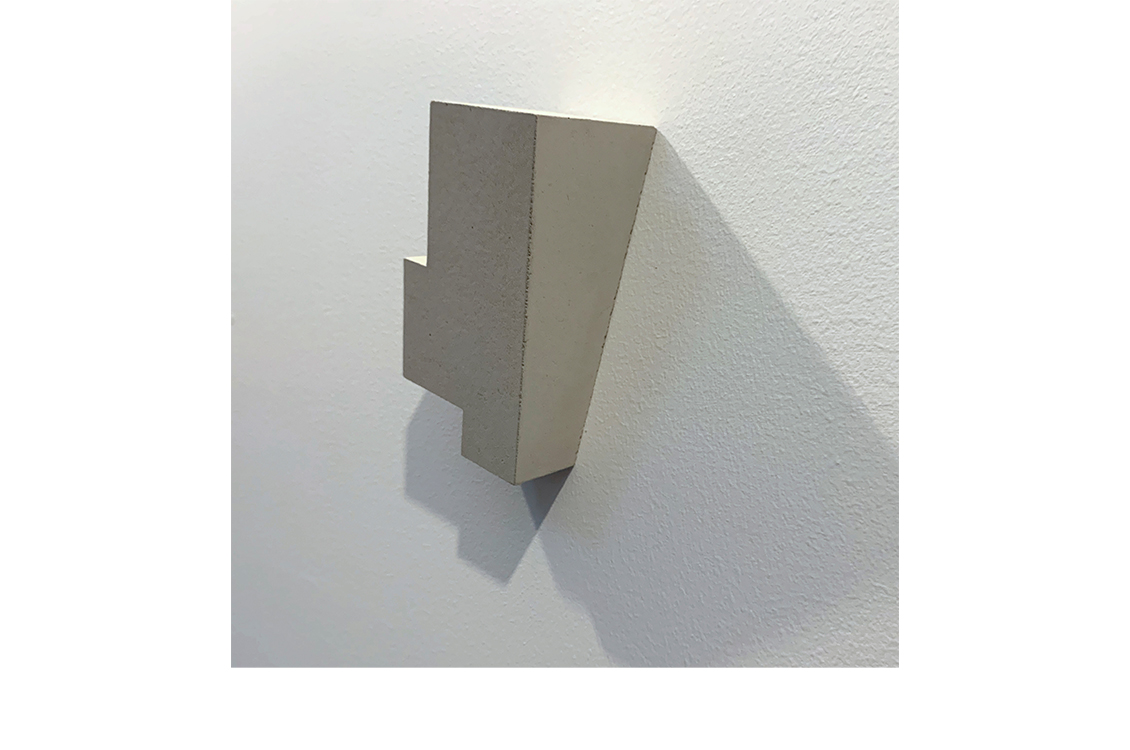
Heather Ramsdale, Philadelphia, PA
Mercury 2.2, 2021, concrete, 6" x 5.5" x 2.75"
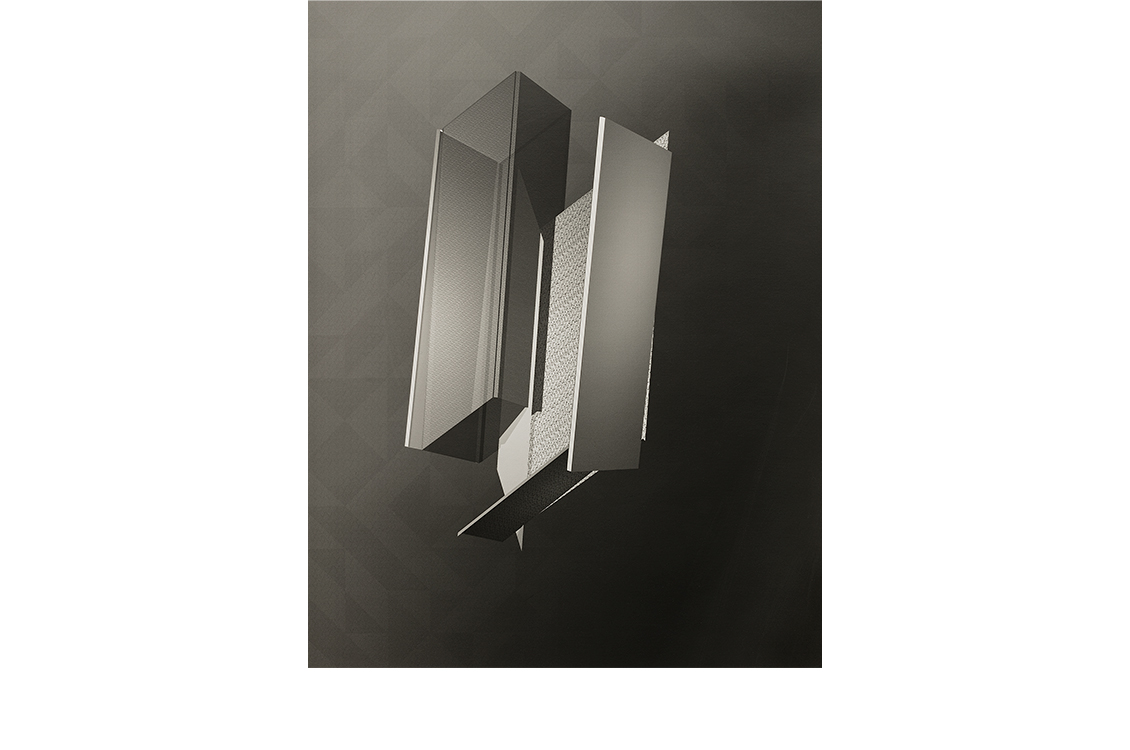
Travis Roozé, Chicago, IL
fat spatula, 2019, silver gelatin print, 9" x 7"
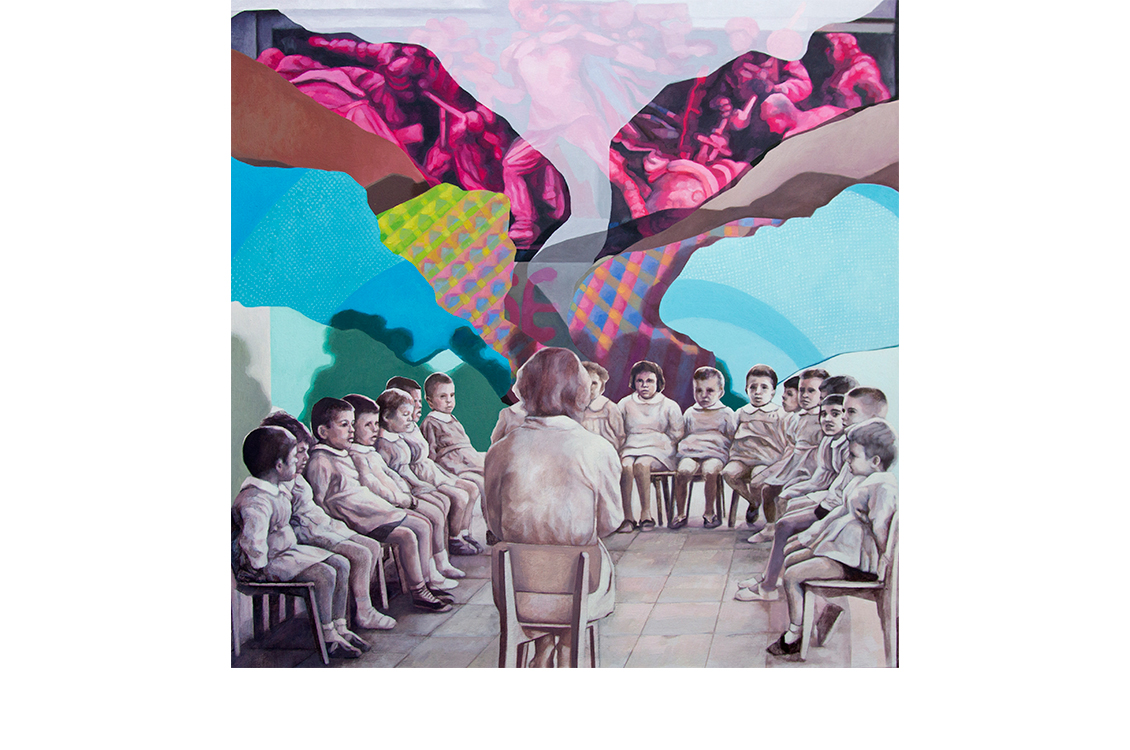
Boryana Rusenova-Ina, Lubbock, TX
Keeping Up with the Times, 2019, oil and acrylic on canvas, 24" x 24" x 1.5"
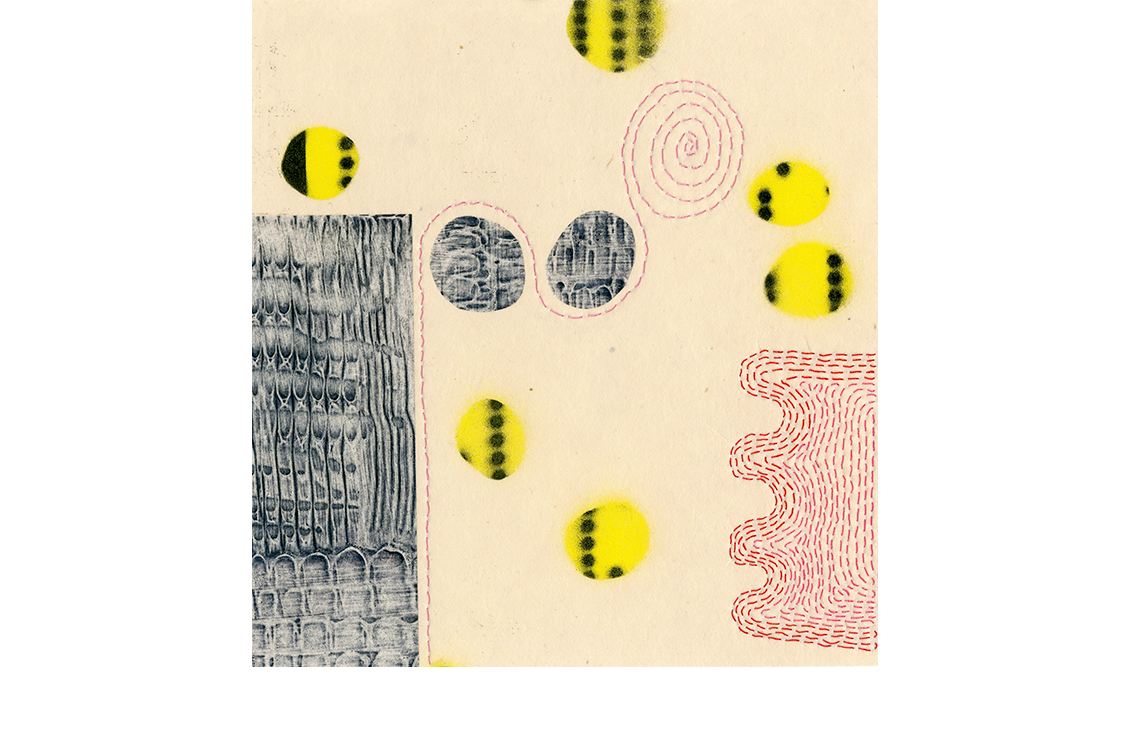
Sarah Smelser, Bloomington, IL
Backyard Shuffle, 2020, archival spray paint, collage, stitching, 7" x 6.5"
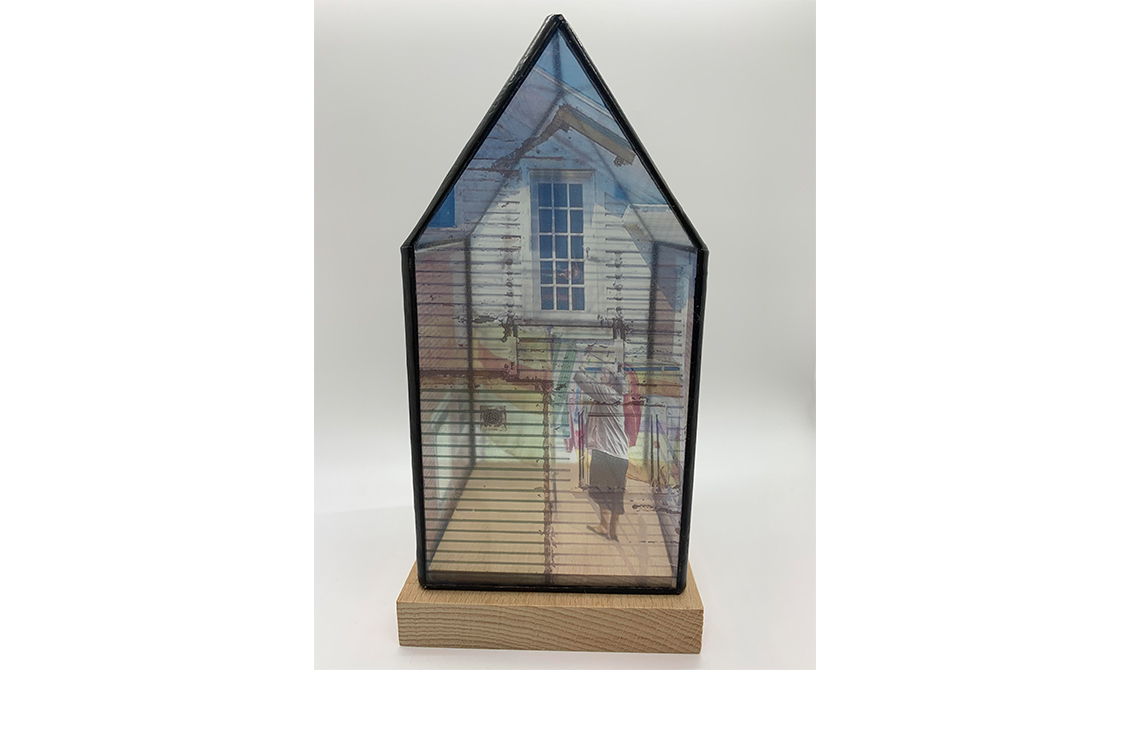
Ju Yun, Chantilly, VA
The World Outside in II, 2020, glass, film, 4" x 4" x 7.5"
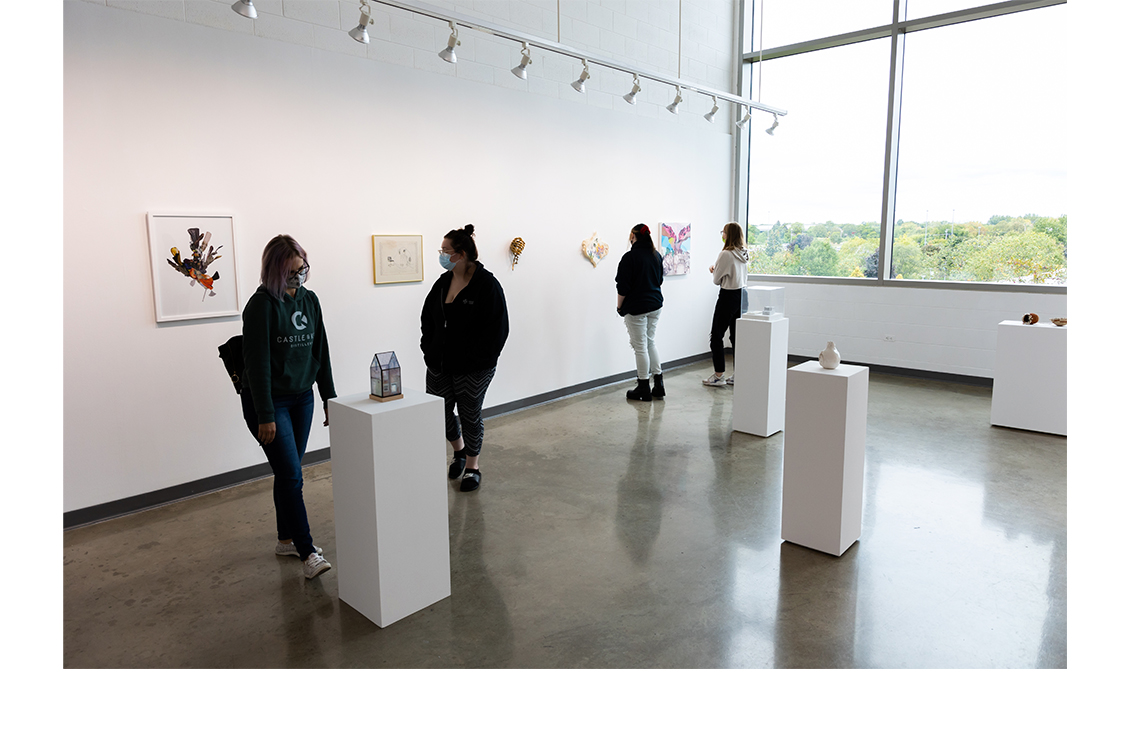
Installation View
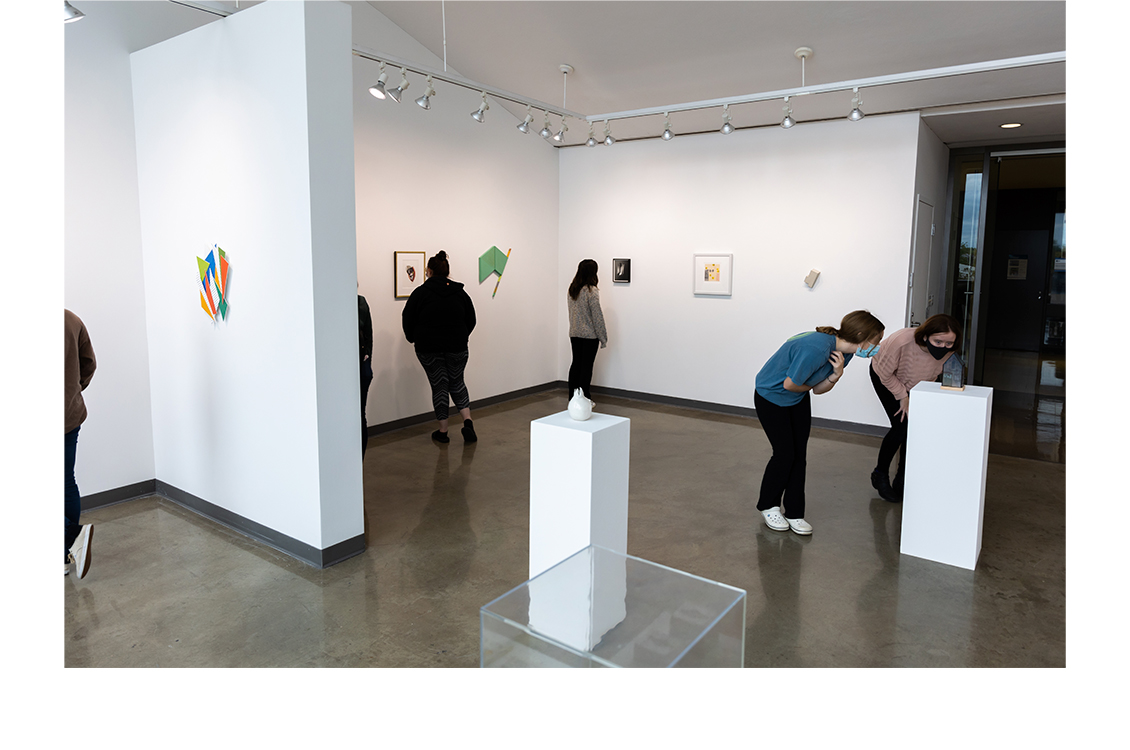
Installation View
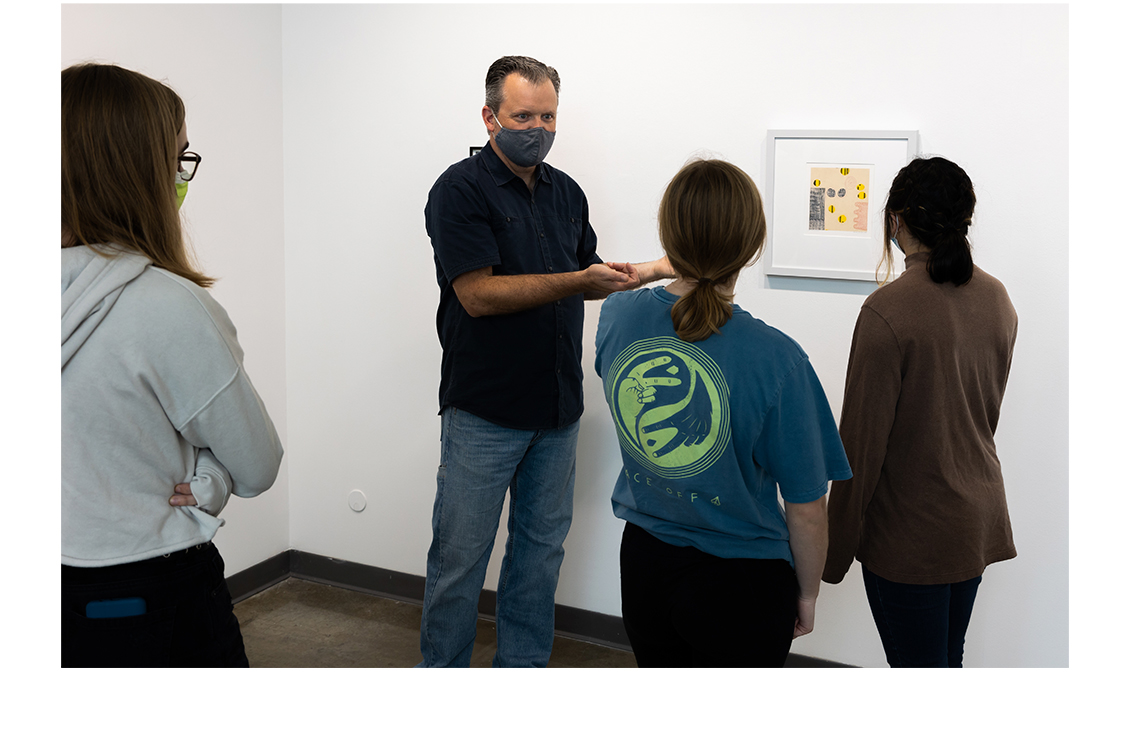
Installation View
The 43rd Annual National Juried Exhibition highlights Small Works selected from entries by artists from across the country. The show typically features a wide array of media ranging from photography and prints to painting and sculpture.
Our juror this year is Carrie Johnson, Executive Director/Curator, Rockford Art Museum, Rockford, IL.
Aodan • David Bower • Riley Brady • Sally Brogden • RJ Calabrese • Shelley Gilchrist
• Blinn Jacobs
• Colleen Kelsey • Dawnice Kerchaert • Ambrin Ling • Daniel McInnis • Joshua Newth
• Bryan Northup
• Eve Ozer • Michelle JY Park • Angela Piehl • Heather Ramsdale • Travis Roozée •
Boryana Rusenova-Ina
• Sarah Smelser • Ju Yun
Aodan, Chicago, IL, Abandon All Hope, Ye Who Exit Here, 2020, glazed porcelain, 6” x 4.5” x 4.5”
I strive to explore, redefine, and externalize femininity and “femaleness”. With highly detailed and intricate techniques, I endeavor to show the complicated tableaux with aggressiveness, gentleness, fragility, softness, toughness, struggles, emotions and pain within femininity and female gender in delicate and cryptic looks as I dig into the neglected, unorthodox, forgotten, and hidden parts in “Yin” out of love, desire, and fear.
I stay loyal to the creed that art should be an organic combination abundant with personal metaphors and symbols; art is about experience rather than conversation. If there is a story with an open ending, there should be art totally open to interpretations and feelings.
David Bower, Naperville, IL, Composition 2, 2020, mixed media, 7” x 6” x 1”
Who knew that old cigar bands were so beautiful in tone and color.
Riley Brady, Chicago, IL, Terrace 4 (Diligence), 2021, etching, hand embroidery, 14” x 17”
My current series functions as a meditation on my year in quarantine, interpreted through the seven terraces of purgatory described in Dante Alighieri’s Divine Comedy. I use two processes in each print: etching and hand-embroidery. The etching portrays the real, and the medium itself is meant to hearken to the biblical intaglios of the past, particularly Gustave Doré’s Purgatorio etchings. The embroidery illustrates the “sacred” elements of the text. In my work, I use embroidery as a way of turning the mundane into something precious.
IG: @rilebrady
Sally Brogden, Knoxville, TN, Untitled, 2021, clay, 13” x 5” x 5"
Doodling during zoom meetings over the past year reconnected me to my interest in linear structures; an interest that I am now exploring.
RJ Calabrese, Lebanon, NJ, Not With a Bang But a Whimper (We're Floating, We're Sinking, We Made You Look), 2020, water soluble oil, polymer clay, thread, flocking, synthetic hair, wood, 8.5” x 8” x 2”
Calabrese often includes figures engaged in an absurd mixture of activities at various points of defeat, often with humorous, eroticized, or foreboding undercurrents. Animals become fixtures, trophies, and other artifacts marked by domination. The use of playful colors and shapes attract the viewer while dismembered bodies and other displays of violence repulse them.
This work expands on an imagined world turned upside down by perversion, destruction, and violence. Veiled by humor and play, this dark, subversive work invites the viewer to investigate meaning all while questioning their own discomfort.
Shelley Gilchrist, Evanston, IL, Artist Statement 7, 2020, acrylic on PVC construction, 19” x 15.5” x 1”
My recent series of constructions is based upon the perennial struggle of many artists to write the often-requested artist statement about their work for an exhibit or proposal. When I spent an entire morning fruitlessly trying to write a meaningful statement that would dazzle readers, the result was an array of nicely folded paper airplanes. From this came the idea to make artwork about the endeavor, a visual expression of my futile writing effort. The resulting “Artist Statement” constructions are angular painted shapes and line patterns pieced together in irregular formations. Colors are vibrant and saturated, and each design projects energy with diverging angles, always resisting equilibrium. This series could also be called “Groping for Words.”
Blinn Jacobs, Branford, CT, Ad infinitum #3 Ever, 2020, casein, oil pastel on incised Gatorboard of different thicknesses, balsa wood, 20.75” x 19.5” x 1.25”
The hexagon or parts of it, have been the foundation of most of my work throughout my career inspired by the benzene ring, the basis of life. It connects all the diversity of life on a fundamental level and is what these pieces intend to address, communicate, and explore in my visual language.
The wooden strip on the outside edge is an extended line to draw attention to the adjacent “negative” wall space. It also infers the continuation of the hexagonal module that can repeat without end. The painted shapes within the piece are stepped (different thicknesses) creating a more pronounced division. The incised surface pattern, made more visible with oil pastel, unites the individual shapes with the totality of the planes reflecting an interaction of different colors and transparency.
Colleen Kelsey, Oakwood, OH, Imagining My Children Grown, 2021, oil on panel, 12” x 12”
My work explores the experience of what it is like to be a mom, a woman and a person walking around in this world. The painting “Imagining My Children Grown” is about my three children Zoe, Emerson, and Lila. The painting was made at my family dining room table during my winter break from teaching. The painting captures my children as possible future adult selves and also what it might be like to be their mom. I am also exploring how to portray light and shadow through chiaroscuro and color with grisaille.
Dawnice Kerchaert, Pontiac, MI, Duo, 2021, coiled pine needles wrapped with raffia, beads, sinew, thread, 3.5” x 11” x 8” variable
Duo is made by the coiled pine needles and raffia wrapped technique. They are two parts connected with a beaded cord. Sunflower seeds finish the edges. My work is influenced by and made of natural materials. Duo came out of a desire to create natural objects that endure time, something that Native American artists figured out long ago. The process of harvesting and preparing the pine needles brings me closer to nature. The technique is a challenge as I work towards new interpretations of this ancient tradition. With Duo the connection is important. The two parts are so much more together than as two separate pieces.
Ambrin Ling, Chicago, IL, A State of Being Unrooted (Lotus), 2020, gouache, watercolor, graphite on handmade abaca paper, 15” x 15.5” x .75”
My artistic practice explores drawing as a both 2D and 3D medium and approach to making that parallels the process of making self, belonging and place. It is mutable and unfinished— a process of ongoing formation, rather than pure object— and therefore not bound to any particular material. My paintings, sculptures, and installations function as different forms of drawing. In A State of Being Unrooted, I apply semi-translucent watercolor and gouache pigments to cast abaca paper in order to create sculptural pieces that mimic decorative, manmade objects as well as natural flora. There is an unresolved tension between the raw vis-à-vis the curling and highly textured edges and ruptures in the paper, and the artificial in the rococo shape and impossibly hued flowers. This work uses form and surface to explore the blurring between nature and civilization, exterior and interior, and origination and displacement.
Daniel McInnis, Perrysburg, OH, Home Entrance, Kagurazaka District, Tokyo, 2019, photograph, 6” x 4”
Shozo-Ga (Tokyo Portraits)
In 2019, I had the opportunity to travel to Tokyo before the Covid-19 lockdown. As the city hurriedly prepared for the Olympic Games, there was a city-wide effort to make visitors feel welcome, as well as being especially open to conversation and interaction. It was an ideal time to be in the city. This portfolio documents a fraction of the spaces, objects, and people that I encountered in seven days. I spent my time navigating seven different districts in the city. My goal was an end portfolio that would document Tokyo's constant amalgamation of modernity with tradition, while simultaneously depict detailed portraits of its citizens, objects, and spaces.
Joshua Newth, Cape Girardeau, MO, Crown, 2019, oil on canvas, 24” x 20”
Exploring the significance of mankind’s relationship to nature, Newth’s work examines the often overlooked and intimate effects we have on our surroundings. For centuries humanity has used nature, in all its forms, as an expendable resource. From pollution and consumption to environmental degradation and species extirpation, we affect and in turn are affected by the natural world. Examining the ubiquity of detritus, specifically the multifaceted nature of litter and its connection to our lives Newth examines one of the anthropogenic results on the environment. These ubiquitous commercial products are a direct result of the consumption of resources, and yet used on a daily basis and subsequently discarded and forgotten about. Re-contextualizing our relationship with these objects Newth reestablishes a sense of appreciation for the relationships we have with seemingly ordinary aspects of life and reminds us of the significance of our relationship to the environment.
Brian Northup, Oak Park, IL, Ongoing Unknowing, 2020, plastic and foam assemblage on stretched canvas, 10” x 8” x 5”
Using collected single-use plastic, environmental artist Bryan Northup attempts to blur the lines between appetizing consumables, biological dissection and everyday waste to explore layers of meaning in an age where plastics have saturated our environment and penetrated our species—both biologically and culturally—to the cellular level. Using three dimensional slices, or sections of rolled single-use plastics as mark-making devices, abstract wall reliefs and sculptural works are created in an attempt to imagine how these very plastics are interacting with living systems at the deepest level. This piece was completed in March 2020 and in response to the pandemic lockdown, I chose to sequester this vibrantly colored composition in a window of my home, facing out, fading in the sun, and it stayed there while the strange year of ongoing unknowing unfolded.
Eve Ozer, Burr Ridge, IL, Birth Of Venus, 2020, mixed media collage, 12” x 9”
I grew up in a house of intellects; our walls were made of books.
You can imagine the horror of my parents when I refused to read until the 5th grade when a wonderful teacher lured me into the pages of make believe and I became a fan of science fiction.
These analogue collages are an extension of those fantasy worlds and my intrigue of the contradictions the fashion & beauty industries fabricate in our collective psyche.
The Vignette Series are short stories told in paper. Looking through magazines and catalogues I search for images that compel me to stop and take a closer look. Then I begin ripping, cutting, and pasting new narratives.
On one level these visual puzzles are meant to be playful, on another, they are about disruption, collapsing boundaries and fractured realities. I’m here to begin the story, it’s up to you to create the ending in a delightfully human collaboration.
Michelle JY Park, Walnut Creek, CA, Soy sauce fish, 2021, junk mail pulp, 2.25” x 4” x 5.5” and A __________ a day, 2021
vitamins, fruit labels, magazine pulp, .25” x 3” x 6.5”
The following are components of 1 / many, an ongoing series made of paper pulp. It is a system of work founded on visual cues borrowed from parts, proverbs and nostalgic vessels that offer tactility, function, or structural sounding. Each piece is hand-pressed using industry-produced containers as molds and junk mail as material to add to the collaborative cycle of human thought and engineering instilled in them. Through this process of gathering, soaking and slow settling — similar to swirling shikhye, a Korean rice drink with pulp — its materiality is rearranged, transformed and integrated with existing counterparts to create a collective of idle things that echo worldly objects and/or frivolous artifacts.
Angela Piehl, Milwaukee, WI, Mosquito, 2017, archival pigment print from collage, 24” x 18”
In my collages, I utilize imagery from media sources such as lifestyle magazines, which possess inherent, suggestive codifications for gender as well as seductive imagery of bourgeois lifestyle and behavior. I incorporate a hybridization of aesthetic orders: synthetic and organic, flora and fauna, and bodily and constructed forms. I am interested in finding the edge between what feels “natural” and unnatural, as well as evoking simultaneously seductive and repulsive response.
This conceptual focus provides the context for employing images of idealized beauty, both fabricated and natural. I conglomerate elaborate elements, which results in strange new forms bound together through tenuous and categorically "unnatural" forces in which the synthetic and organic merge and overlap in unexpected ways.
The resulting visual ambiguity is an invitation for the viewer to decipher the source material, question their preconceived notions about nature and beauty, and acknowledge the complex realizations that such questions can evoke.
Heather Ramsdale, Philadelphia, PA, Mercury 2.2, 2021, concrete, 6” x 5.5” x 2.75”
The objects I make portray a series of dichotomies: familiar yet new, heavy but light, stable and uncertain, curious but plausible, all in consideration of balance. Control and failure play a large role in fabrication, and I find that surrender gives up a certain energy to the material or object itself. Logistics frequently challenge my master plan and force me to bend or reevaluate, and as efforts in experimentation get derailed, new opportunities emerge out of being forced to negotiate between a set of rigid constructs and fantastical thinking. My points of inquiry are varied; I consider math often, which overlays subjects of religion and spirituality. I often think of the things I make as pensive and mysterious but always balanced with a slice of dark humor. The unexpected moments when my sculptures suggest personas, such as humorous or lonely, reveal delicate clues about their existence.
Travis Roozée, Chicago, IL, fat spatula, 2019, silver gelatin print, 9” x 7”
For some time, my photographic ritual followed an established method of image capture: consider a subject, choose a point of view, aim the camera, and press the shutter. That is a simplified description of a complex process but was once a trusted working method. Feeling limited by this routine, I began using 3D graphic software to develop a virtual catalog of components that were used to construct larger scenes. These assemblies are converted into tangible objects using nineteenth-century printing methods. Each piece is skewed by fickle chemistry, atmospheric conditions, and user error. Stains, spots, scratches, brush marks, dust, and ghost markings are inevitable. Having been removed from a lifeless digital realm, each print becomes a unique version of itself. Virtual reality shattered by alchemic magic.
Boryana Rusenova-Ina, Lubbock, TX, Keeping Up with the Times, 2019, oil and acrylic on canvas, 24” x 24” x 1.5”
My work examines the connection between identity and belonging within the landscape genre and re-imagines our relationship to foreign and native lands. My studio practice is two-fold: it begins with the construction of props and dioramas, which then become
subjects for paintings. This process borrows from pictorial genres like scenography to make evident the artifice within landscape images, which often hold implicit messages about belonging, ownership and consumption. Through painting my fabricated sets, I subvert our perception of what is a familiar place and emphasize the role of landscape in constructing ideas of home and collective identity.
Sarah Smelser, Bloomington, IL, Backyard Shuffle, 2020, archival spray paint, collage, stitching, 7” x 6.5”
The creative work that sustains me uses memory, impression, and my experiences moving through space to cobble together a non-traditional landscape.
A morning walk, in the right location, can be a visual feast. Depending where one walks, there could be fruit trees, native grasses, sculpted hedges, farmland, evergreens, perennials, cacti, pebble gardens, or a range of flowers. I am a casual pedestrian, but I’m on a mission. I take note of what is native, imported, synthetic, or toxic. I pay close attention to transitions such as soil to rock, curb to road, and public to private. These shifts can be felt underfoot. They dictate one’s mood, movement, and attire.
While walking, I study how homeowners organize and manicure their property; these spaces are compositional masterpieces. I imagine these plots from above, see them fit together, and use my steps to navigate an imagined map.
Ju Yun, Chantilly, VA, The World Outside in II, 2020, glass, film, 4” x 4” x 7.5”
My paintings show transitioning between traditional Korean art and wholly contemporary subjects and methods embraced within that in-between space, I often find a sense of spirituality and a great source of creativity.
Inside the visual space of the picture, the line can exist absolutely as its own epitome. At the same time, my idiosyncratic approach and nod towards western formalism is also entirely modern in tone.
My 3D home series is inspired by the imagined memories of nostalgic and dream-like environments, moments of memories trapped in the house. I enjoyed how it looks distortion and optical illusion by transparency films. I found my surreal home sculptures series are intended as a reflection of our psychological need to take refuge in a dream-like inner space.